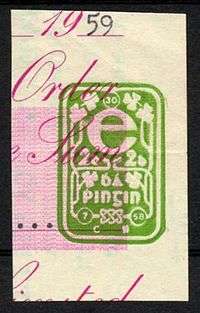Spahn tax
A Spahn tax is a type of currency transaction tax that is meant to be used for the purpose of controlling exchange-rate volatility. This idea was proposed by Paul Bernd Spahn in 1995.[1]
Early history
The initial idea for a currency transaction tax is attributed to James Tobin in 1972,[2] a concept now known as a Tobin tax. On June 16, 1995. Spahn, in his analysis of the original idea, concluded that the concept was not viable and suggested an alternative solution to the problem of managing exchange-rate volatility.[1]
Concept
According to Spahn, "Analysis has shown that the Tobin tax as originally proposed is not viable and should be laid aside for good." Furthermore, he believes that "it is virtually impossible to distinguish between normal liquidity trading and speculative 'noise' trading. If the tax is generally applied at high rates, it will severely impair financial operations and create international liquidity problems, especially if derivatives are taxed as well. A lower tax rate would reduce the negative impact on financial markets, but not mitigate speculation where expectations of an exchange rate change exceed the tax margin."[1]
In 1995, Spahn suggested an alternative, involving "a two-tier rate structure consisting of a low-rate financial transactions tax, plus an exchange surcharge at prohibitive rates as a piggyback. The latter would be dormant in times of normal financial activities, and be activated only in the case of speculative attacks. The mechanism allowing the identification of abnormal trading in world financial markets would make reference to a 'crawling peg' with an appropriate exchange rate band. The exchange rate would move freely within this band without transactions being taxed. Only transactions effected at exchange rates outside the permissible range would become subject to tax. This would automatically induce stabilizing behavior on the part of market participants."[1]
Proposals
On June 15, 2004, the Belgian Parliament approved a bill implementing a Spahn tax.[3] According to the legislation, Belgium will introduce the Spahn tax once all countries of the eurozone introduce a similar law.[4]
In November 2004, Belgium submitted this law for an opinion to the European Central Bank, which provided both an economic and legal assessment. Its summary stated:
"...the ECB concludes that the economic and monetary usefulness of a tax, such as envisaged by the draft law, is highly questionable, given the uncertainty of its claimed benefits and the likely welfare costs arising from distortions in the working of financial markets. This assessment is reinforced by the difficulties expected with respect to its implementation."[4]
It continued:
"...the ECB is of the opinion that the introduction by a euro area Member State of a tax, such as envisaged by the draft law, is incompatible with the Treaty."[4]
See also
References
- 1 2 3 4 Paul Bernd Spahn (June 16, 1995). "International Financial Flows and Transactions Taxes: Survey and Options" (PDF). University of Frankfurt/Main; Paper originally published with the International Monetary Fund (IMF) as Working Paper WP/95/60. Retrieved 2010-01-13.
- ↑ James Tobin (July–October 1978). "A Proposal for International Monetary Reform". Eastern Economic Journal. Eastern Economic Association. pp. 153–159. Retrieved 2010-01-31.
- ↑ Marc Quaghebeur (November 29, 2004). "Belgium Supports Tobin Tax" (PDF). Tax Notes International. pp. 727–729.
- 1 2 3 ECB (2004). Opinion of the European Central Bank (CON/2004/34)
